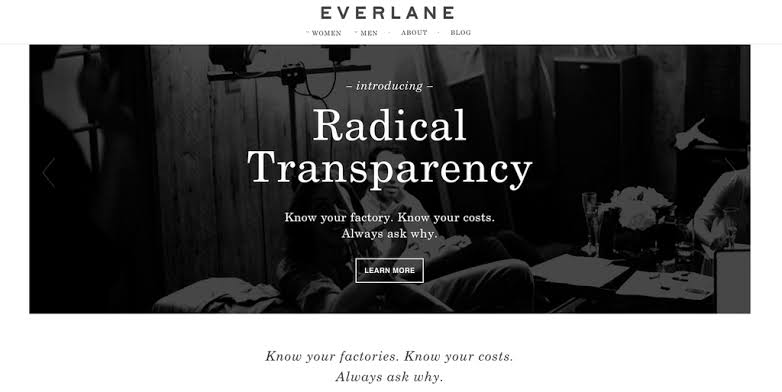
In today’s digital age, transparency in marketing isn’t just an option—it’s a necessity. Brands that prioritize honesty and openness gain customer trust, boost engagement, and build long-term loyalty. Learn how incorporating transparency in marketing can elevate your brand’s credibility and drive conversions.
Table of Contents
- Introduction: Why Transparency in Marketing Matters
- The Psychology Behind Consumer Trust
- How Transparency in Marketing Boosts Brand Credibility
- Real-World Examples of Transparent Brands
- Actionable Steps to Implement Transparency in Marketing
- Conclusion: The Future of Honest Branding
Introduction: Why Transparency in Marketing Matters
In a world where consumers are bombarded with advertisements, authenticity is the key to standing out. Transparency in marketing refers to a brand’s ability to be open, honest, and ethical in its communication, pricing, and business practices. Modern consumers demand clarity—hidden fees, misleading claims, and vague promises are instant deal-breakers.
A survey by Label Insight found that 94% of consumers are likely to be loyal to a brand that offers complete transparency. That’s why integrating transparency in marketing into your strategy isn’t just about ethics—it’s a business necessity that fosters trust, credibility, and long-term loyalty.
The Psychology Behind Consumer Trust
Trust is the foundation of every successful brand-consumer relationship. When customers feel that a brand is hiding information, they become skeptical. However, when a company openly shares its values, policies, and business practices, consumers feel confident in their purchasing decisions.
Psychological studies show that transparency reduces cognitive dissonance—the discomfort people feel when uncertain about their choices. When brands communicate clearly and honestly, they eliminate doubts and encourage repeat purchases.
For example, brands that disclose sourcing methods, pricing breakdowns, and customer reviews see higher engagement. This is because consumers appreciate honesty over vague marketing jargon.
How Transparency in Marketing Boosts Brand Credibility
Consumers today are highly informed. With instant access to reviews, social media, and comparison sites, they can easily spot misleading claims. If a brand gets caught in deception, it risks permanent damage to its reputation.
Here’s how transparency in marketing can enhance brand credibility:
1. Builds Authentic Customer Relationships
Customers appreciate brands that communicate openly. Whether it’s admitting a mistake or explaining a price increase, honesty fosters emotional connections.
2. Encourages Customer Advocacy
A transparent brand doesn’t need aggressive marketing. Satisfied customers naturally become advocates, sharing their positive experiences on social media and review platforms.
3. Improves Customer Retention
When consumers trust a brand, they stay loyal. Instead of constantly chasing new customers, businesses that prioritise transparency in marketing enjoy strong retention rates.
Real-World Examples of Transparent Brands
Patagonia: Sustainability Through Honesty

Patagonia is known for its radical transparency. The company openly shares details about its supply chain, environmental impact, and ethical sourcing practices. By doing so, Patagonia has built a community of loyal customers who align with its values.
Buffer: Transparent Salary Structures

Buffer, a social media management company, publicly shares its salary formula and employee wages. This level of transparency fosters trust among employees and customers alike, setting a benchmark for corporate honesty.
Everlane: Radical Transparency in Pricing

Everlane, a fashion brand, breaks down the costs of its products, from material sourcing to manufacturing. By doing so, it justifies its pricing and gains consumer trust.
Actionable Steps to Implement Transparency in Marketing
1. Be Honest About Pricing and Policies
Hidden fees and misleading pricing structures erode trust. Ensure your pricing is clear and easy to understand.
2. Own Up to Mistakes
If your brand makes a mistake, acknowledge it publicly and provide solutions. Consumers appreciate honesty over cover-ups.
3. Show Behind-the-Scenes Operations
Use social media to showcase your production process, workplace culture, and team members. This humanizes your brand.
4. Share Customer Reviews—Good and Bad
Allow customers to see both positive and negative reviews. Responding to criticism with solutions proves your commitment to improvement.
5. Clearly Communicate Brand Values
Customers align with brands that share their values. Make your mission statement, sustainability efforts, and ethical practices easily accessible.
Conclusion: The Future of Honest Branding
As digital consumers become more discerning, transparency in marketing is no longer optional—it’s essential. Brands that prioritize honesty, open communication, and ethical business practices will not only survive but thrive.
If you want to build long-term customer loyalty, start integrating transparency in marketing into your strategy today. Your audience will reward you with trust, advocacy, and lasting relationships.
Ready to Transform Your Brand?
Implement these transparency strategies today and watch your customer loyalty soar. Share your thoughts—how has transparency shaped your purchasing decisions?





